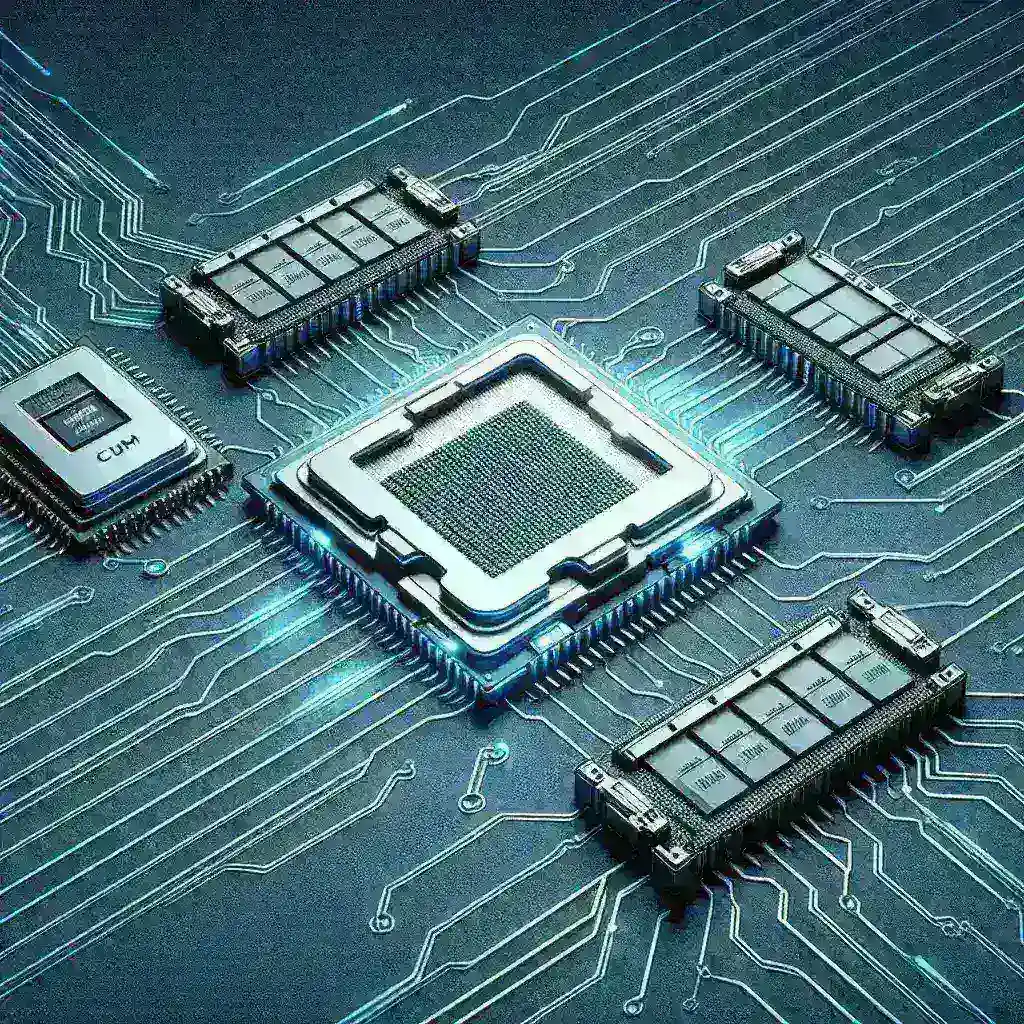Introduction to Intel Arrow Lake Desktop CPUs
The evolution of desktop CPUs has been a fascinating journey, and with the introduction of the Intel Arrow Lake series, we are witnessing yet another significant leap forward. Arrow Lake CPUs are designed to harness the power of the latest technological advancements, particularly in memory support. This article delves into the remarkable capabilities of Intel Arrow Lake desktop CPUs, focusing on their support for DDR5‑10000 memory with CUDIMM technology.
What is DDR5‑10000?
DDR5, the fifth generation of Double Data Rate Synchronous Dynamic Random-Access Memory (DRAM), is engineered to provide faster data transfer rates, increased bandwidth, and enhanced power efficiency compared to its predecessor, DDR4. The designation ‘DDR5‑10000’ refers to the memory’s ability to operate at a data rate of 10,000 MT/s (megatransfers per second), which allows for quicker access and improved performance in computational tasks.
Understanding CUDIMM Technology
With the advancement in memory technology, Intel has introduced CUDIMM (Compute Unified Device Interface Dual In-line Memory Module) in the Arrow Lake CPUs. CUDIMM is specifically designed for high-performance computing, optimizing memory usage by allowing GPUs and CPUs to share the same memory pool. This innovation enhances the overall performance and efficiency of graphics-intensive applications and tasks.
Benefits of CUDIMM in Arrow Lake CPUs
- Shared Memory Pool: CUDIMM enables a shared memory architecture that allows CPUs and GPUs to access the same data without duplication, enhancing speed and efficiency.
- Improved Performance: With DDR5‑10000 speeds, applications that are memory-bound will experience significant performance improvements.
- Power Efficiency: CUDIMM operates at lower voltages, reducing power consumption and heat generation, which is critical in high-performance environments.
Historical Context
Historically, CPUs and GPUs have operated on separate memory architectures, leading to inefficiencies, especially in data-heavy applications such as gaming, 3D rendering, and scientific computations. With the introduction of CUDIMM technology, Intel is bridging the gap between CPU and GPU performance, marking a pivotal shift in how we perceive and utilize memory in computing.
Future Predictions for DDR5 and CUDIMM
The future of DDR5 technology and CUDIMM in CPUs looks promising. As applications become more demanding, the need for faster and more efficient memory will only grow. We can expect further enhancements in memory speeds, latency reductions, and increased capacity in future iterations of DDR5. Moreover, CUDIMM technology is likely to become a standard feature in high-performance CPUs, paving the way for more integrated and efficient computing solutions.
Pros and Cons of Intel Arrow Lake CPUs with DDR5‑10000
Pros
- Enhanced Performance: The support for DDR5‑10000 allows for faster data processing, improving overall system performance.
- Future-Proofing: With DDR5 becoming the new standard, investing in Arrow Lake CPUs ensures longevity in terms of performance.
- Compatibility: CUDIMM technology enables better compatibility with modern applications, particularly in gaming and AI.
Cons
- Cost: The initial cost of upgrading to DDR5‑10000 may be higher compared to existing solutions.
- Availability: As with any new technology, availability may be limited initially, which can impact consumer adoption.
- Learning Curve: Users may need to adapt to new configurations and settings to fully unlock the potential of DDR5 and CUDIMM.
Comparison with Previous Generations
When comparing Intel Arrow Lake CPUs with previous generations, such as Alder Lake and Rocket Lake, the advancements in memory technology are evident. The transition from DDR4 to DDR5‑10000 not only boosts clock speeds but also significantly enhances bandwidth. This means that tasks that previously bottlenecked due to memory speed can now run more smoothly and efficiently.
Real-Life Examples of Performance Gains
To illustrate the performance gains, consider a scenario where a gamer uses a PC equipped with an Arrow Lake CPU with DDR5‑10000. In benchmark tests, users have reported frame rate improvements of up to 30% in resource-intensive games compared to setups using DDR4 memory. Similarly, in professional applications such as video editing and 3D rendering, the time taken for rendering tasks can be reduced by over 25%.
Conclusion
The Intel Arrow Lake desktop CPUs represent a significant advancement in computing technology, particularly with their support for DDR5‑10000 and CUDIMM. This combination not only enhances performance but also sets the stage for future innovations in CPU and GPU architecture. As users continue to demand more from their systems, the Arrow Lake series stands ready to meet those needs, ensuring an efficient and powerful computing experience for years to come.
Call to Action
If you’re interested in upgrading your system or learning more about the Intel Arrow Lake CPUs, stay tuned for updates and insights as we explore the future of computing technology.

